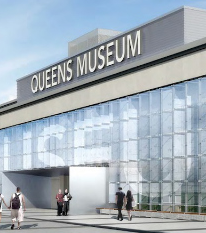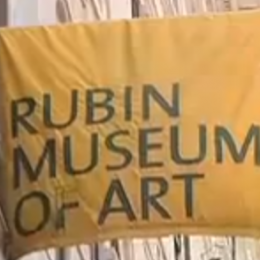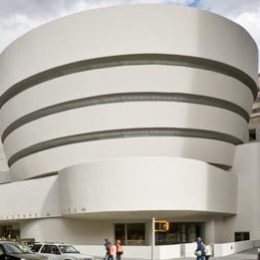Multimedia Presentations
Module 1 – State of the Field: Museum Accessibility
Module 2 – Understanding our Stakeholders: The Disability Community
Module 3 – Communicating and Interacting with People with Disabilities
Module 4 – Museum Access: Accessible Physical Space
Module 5 – Museum Access: Multimodal Engagement
Module 6 – Museum Access: Inclusive Practices by Museum Teams
Module 1 – State of the Field: Museum Accessibility
Why Access for All? Two Activists Speak
 Carole Gothelf of AHRC-NYC and Carl Jacobsen of the National Federation of the Blind speak at a press conference kicking off Art Beyond Awareness Month, October 2005.
Carole Gothelf of AHRC-NYC and Carl Jacobsen of the National Federation of the Blind speak at a press conference kicking off Art Beyond Awareness Month, October 2005.
 Americans with Disabilities Act
Americans with Disabilities Act
The ADA National Network presents an informational and inspiring explanation of the history and meaning of the Americans with Disabilities Act.
 Americans with Disabilities Act Overview (ASL)
Americans with Disabilities Act Overview (ASL)
Beca Baily, Deaf Specialist, explains the Americans with Disabilities Act, and how it relates to Deaf or Hard of Hearing persons. Produced by the Arizona Commission for the Deaf and the Hard of Hearing.
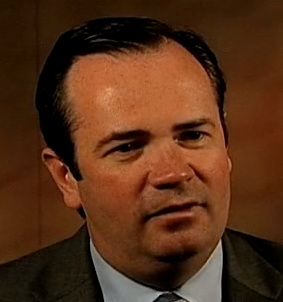 ADA Update with Attorney Ed O’Callaghan
ADA Update with Attorney Ed O’Callaghan
Ed O’Callaghan, partner at Clifford Chance and former Asst. US Attorney answers questions on the current state of ADA compliance for cultural institutions and businesses. Recorded by Art Beyond Sight, May 2013.
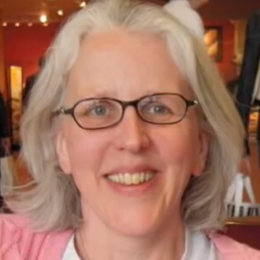 Accessibility for All at the Minneapolis Institute of Arts
Accessibility for All at the Minneapolis Institute of Arts
Sheila McGuire, Director of Museum Guide Programs at the Minneapolis Institute of Arts in Minneapolis, MN on how the MIA works to provide access for all.
 Accessibility Challenges of the Small Museum
Accessibility Challenges of the Small Museum
Lisa Gross, Curator of Education at Paris Gibson Square Museum of Art in Great Falls, Montana, talks about the challenges, assets, and community partners of a small museum in creating an accessibility program.
 How a Smaller Museum Presents Art for All
How a Smaller Museum Presents Art for All
Andy McGivern, Curator of Exhibitions at the Woodson Art Museum in Wausau, Wisconsin, offers philosophical and practical reflections on accessibility in the smaller museum.
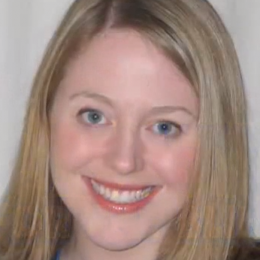 An Accessibility Program at the Woodson Museum
An Accessibility Program at the Woodson Museum
Erin Narloch, Curator of Education at the Woodson Art Museum in Wausau, Wisconsin explains how the museum began an accessibility program.
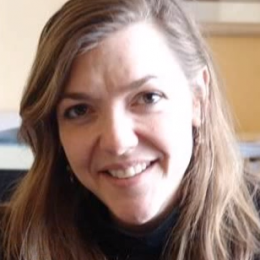 Accessibility in the Smaller Museum
Accessibility in the Smaller Museum
Helena Vidal, Director of Education and Public Programs at El Museo del Barrio in New York City, on why accessibility is important for a smaller museum.
 Museum of Modern Art
Museum of Modern Art
A Project Access report on programs available for people with disabilities
at MoMA, the Museum of Modern Art, New York.
A Project Access report on programs available for people with disabilities
at the Queens Museum of Art, NY.
A Project Access report on programs available for people with disabilities
at the Rubin Museum of Art, NY.
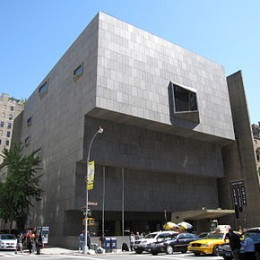 Whitney Museum of American Art
Whitney Museum of American Art
A Project Access report on programs available for people with disabilities
at the Whitney Museum of American Art, NY.
 Children’s Museum of Manhattan
Children’s Museum of Manhattan
A Project Access report on programs available for children
with disabilities at the Children’s Museum of Manhattan, NY.
A Project Access report on programs available for people with disabilities
at the New-York Historical Society.
A Project Access report on programs available for people with disabilities
at the Tenement Museum, NY.
A Project Access report on programs available for people with disabilities
at the Solomon R. Guggenheim Museum, NY.
Module 2 – Understanding Our Stakeholders: The Disability Community
 Understanding People with Disabilities
Understanding People with Disabilities
Art Beyond Sight’s Project Access presents a short introduction to understanding the range of disabilities.
 ABS: A New Definition of Disability
ABS: A New Definition of Disability
Valerie Fletcher of Adaptive Environments in Boston, Massachusetts explains the new definition of Disability put forth by the World Health Organization and its implications for accessibility.
 Advice on Starting an Accessibility Program
Advice on Starting an Accessibility Program
Mariann Smith, Curator of Education at the Albright-Knox Art Gallery in Buffalo, NY offers encouragement to museums considering how to start an accessibility program.
 Advice for Museum Staff from an Accessibility Activist
Advice for Museum Staff from an Accessibility Activist
Georgina Kleege, author and U.C. Berkeley English professor, in a keynote speech at the Art Beyond Sight Conference, October, 2006 offers advice to museum personnel on accessibility for blind visitors.
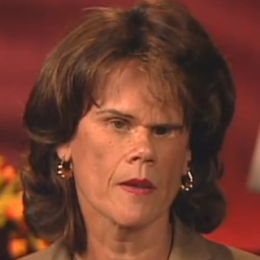 How to Refer to Blind People
How to Refer to Blind People
Advice from Dr. Betsy Zaborowski, former Director of the National Federation of the Blind’s Jernigan Institute.
 First Person: How Does it Feel to be Blind?
First Person: How Does it Feel to be Blind?
Dr. Betsy Zaborowski, former Director of the National Federation of the Blind’s Jernigan Institute, answers one of the most commonly asked questions by sighted people.
 First Person: Why Blind People Get Stereotyped
First Person: Why Blind People Get Stereotyped
Dennis Holsten lives in New York City and is a member of the National Federation of the Blind.
 First Person: Battling Blind Stereotypes
First Person: Battling Blind Stereotypes
Sheila Leigland lives in Great Fall, Montana and is a member of the Montana Association for the Blind.
 First Person: Growing Up Blind
First Person: Growing Up Blind
Mindy Flegelman, National Federation of the Blind, tells museum staff about her experiences growing up blind.
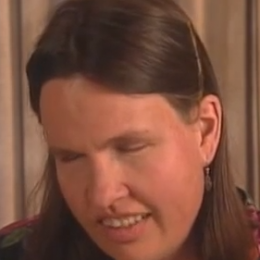 First Person: Learning to Love Art
First Person: Learning to Love Art
Tracy Carcioni, a blind museum visitor in New York City, talks about her art experiences growing up and today.
 What Do Blind People Want From a Museum or Art Experience?
What Do Blind People Want From a Museum or Art Experience?
Dr. Betsy Zaborowski, former Director of the National Federation of the Blind’s Jernigan Institute, offers advice to museums.
 First Person: What is “Hard of Hearing?”
First Person: What is “Hard of Hearing?”
Joseph Gordon, a New Yorker and avid museum goer, describes his hearing loss and appropriate language for referring to people with hearing loss.
 Advice for Museums: Serving Visitors with Hearing Loss
Advice for Museums: Serving Visitors with Hearing Loss
Arlene Romoff, advocate for people with hearing loss and author of Listening Closely: A Journey to Bilateral Hearing offers advice to museums on serving visitors with hearing loss.
 Invisible No More TV. Together, We Can Make a Difference!
Invisible No More TV. Together, We Can Make a Difference!
The Invisible Disabilities Association presents the challenges of living with invisible disabilities.
Autis m Theater Initiative: Theater Development Fund (TDF)
m Theater Initiative: Theater Development Fund (TDF)
Behind the scenes of Theatre Development Fund’s Autism Theatre Initiative, which sponsored an autism-friendly performance of Disney’s “Mary Poppins” on Broadway on April 29, 2012. (Captioned video) For more videos and features visit TDF Stages.
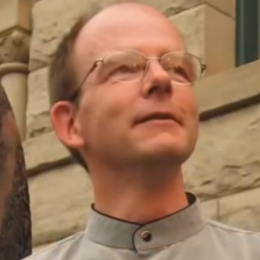 The Challenge of Presenting Contemporary Art
The Challenge of Presenting Contemporary Art
Bob Durdon, Curator of Art at Paris Gibson Square Museum of Art in Great Falls, Montana speaks about the challenge of presenting contemporary art for all audiences.
Module 3 – Communicating and Interacting with People with Disabilities
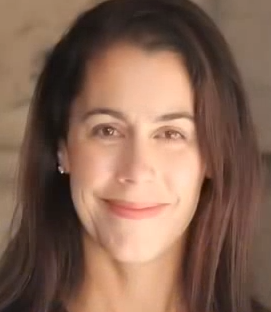 Sighted and Blind Consultants for Accessibility
Sighted and Blind Consultants for Accessibility
Kathryn Potts, former Director of Education at Whitney Museum of American Art, tells how the museum used sighted and blind consultants in creating an accessibility program.
 IPhone Apps: Good and Bad Design for People with Disabilities
IPhone Apps: Good and Bad Design for People with Disabilities
Walei Sabry, consultant on Disability Access Technology, demonstrates good and bad design in IPhone apps for people with disabilities.
 Accessible and Inaccessible Web Pages
Accessible and Inaccessible Web Pages
Richard Fox, Senior Faculty member at Baruch College Computer Center for Visually Impaired People, presents examples of features that make web pages accessible or inaccessible for people who are blind or have low vision.
 Teaching Mobile Technology to Museum Visitors
Teaching Mobile Technology to Museum Visitors
Chancey Fleet, Assistive Technology Coordinator at the Andrew Heiskell Braille and Talking Book Library in New York, demonstrates techniques for assisting museum visitors with assistive technology.
 The Potential of Mobile Apps in Museums
The Potential of Mobile Apps in Museums
Georgia Krantz, Independent Educator and Consultant and Adjunct Professor at NYU’s Tisch School, shares her experiences creating the Guggenheim Museum’s first mobile app that is accessible by people with disabilities.
 Captioning Standards for People Who are Deaf or Hard of Hearing
Captioning Standards for People Who are Deaf or Hard of Hearing
Janice S. Lintz, CEO Hearing Access and Innovations, outlines the current state of captioning standards for people who are deaf or hard of hearing.
 Staff Training for Disabilities
Staff Training for Disabilities
Ellie McKinney, Assistant Director of Visitor Services at Walker Art Center in Minneapolis, MN on training staff to serve visitors with disabilities.
 The Role of Blind Consultants
The Role of Blind Consultants
Helena Vidal, Director of Education and Public Programs at El Museo del Bsrrio in New York City, on the role of blind consultants in creating an accessibility program.
 Training Docents for Disabilities
Training Docents for Disabilities
Courtney Gerber, Manager of Tour Program at the Walker Art Center in Minneapolis, Minnesota on how the museum trains docents for disabled visitors.
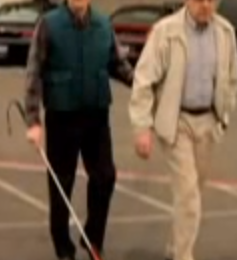 Sighted Guide Technique
Sighted Guide Technique
The American Foundation for the Blind provides tips and techniques on acting as a sighted guide for someone who is blind or visually impaired.
Carole Gothelf of AHRC-NYC and Mindy Flegelman of the National Federation of the Blind demonstrate sighted guide technique at an Art Beyond Sight training session for museum staff.
 Techniques for Guiding a Person Who is Blind
Techniques for Guiding a Person Who is Blind
Gale Delaney, Orientation and Mobility Specialist at The New York Institute for Special Education, demonstrates techniques for navigating with and guiding a person who is blind.
 What to do if a Blind Person Appears Lost
What to do if a Blind Person Appears Lost
Dr. Betsy Zaborowski, former Director of the National Federation of the Blind’s Jernigan Institute, offers advice.
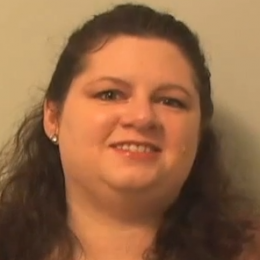 Autism: Advice for Museum Staff
Autism: Advice for Museum Staff
Kim Mack Rosenberg, president of the National Autism Association (NY Metro Chapter), offers advice for museum staff when dealing with visitors with autism.
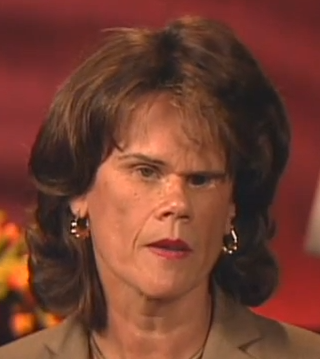 How to Refer to Blind People
How to Refer to Blind People
Advice from Dr. Betsy Zaborowski, former Director of the National Federation of the Blind’s Jernigan Institute.
Module 4 – Museum Access: Accessible Physical Space
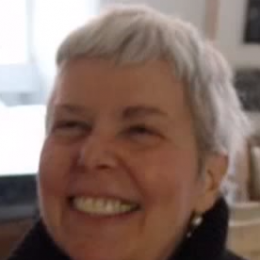 First Person: A Blind New Yorker’s Museum Experiences
First Person: A Blind New Yorker’s Museum Experiences
Myra Brodsky is a retired court clerk in New York City.
 Autism: Performing Arts for People with Autism
Autism: Performing Arts for People with Autism
Kim Mack Rosenberg, president of the National Autism Association (NY Metro Chapter), describes how music and other performing arts can benefit people with autism.
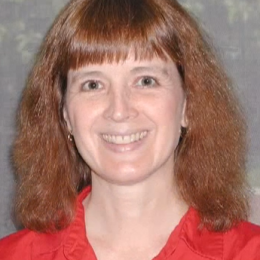 The Challenge of Access in Old Buildings
The Challenge of Access in Old Buildings
Mariann Smith, Curator of Education at the Albright-Knox Art Gallery in Buffalo, NY talks about the challenges old buildings present in creating accessibility.
 Universal Design in Museums
Universal Design in Museums
Rebecca McGinniss, Accessibility Coordinator at the Metropolitan Museum of Art in New York offers examples of good universal design in museum programs for accessibility.
 Employing Staff in a Wheelchair
Employing Staff in a Wheelchair
Ellis McKinney, Assistant Director of Visitor Services at Walker Art Center in Minneapolis, MN on the challenges and rewards of having a staff member in a wheelchair, and what it taught them about the physical space of the museum.
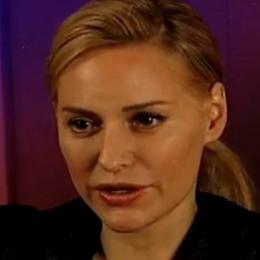 Aimee Mullens: Advice for Museums on Accessibility as the New Normal
Aimee Mullens: Advice for Museums on Accessibility as the New Normal
Mullens is an Athlete, Fashion Icon, Actor, Design Innovator, Advocate. She offers advice on how museums should think of accessibility as the new normal in society.
Module 5-Museum Access: Multimodal Engagement
 Tools & Techniques to Create Access
Tools & Techniques to Create Access
Art Beyond Sight’s Project Access presents a summary of methods used to create accessibility for people with various disabilities.
Art Beyond Sight presents an overview of the ways museums use touch to offer art experiences to people who are blind or have vision loss.
![]() How to Conduct a Guided Touch Tour
How to Conduct a Guided Touch Tour
Art Beyond Sight offers advice for museums on how to conduct a successful guided touch tour for people who are blind or have low vision. This video is audio described.
 Sculpture Garden Touch Tour
Sculpture Garden Touch Tour
Erin Narloch, Curator of Education at the Woodson Art Museum in Wausau, Wisconsin describes how the museum began a touch tour in its sculpture garden.
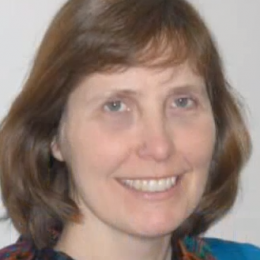 Touch Tour as Universal Design
Touch Tour as Universal Design
Debbi Hegstrom, Minneapolis Institute of Arts, Minneapolis, MN on the Touch Tour as Universal Design that benefits all visitors.
 How to Make a Tactile Diagram
How to Make a Tactile Diagram
Teresa Kardoulias of Art Education for the Blind demonstrates the steps involved in creating a tactile diagram for use with people who are blind or have vision loss. This video is audio described for people with vision loss.
 Verbal Description Demonstration in a Museum #1
Verbal Description Demonstration in a Museum #1
Georgia Krantz of the Guggenheim Museum, New York demonstrates verbal description of art within a museum setting. The demonstration took place at the Guggenheim.
 Verbal Description Demonstration in a Museum #2
Verbal Description Demonstration in a Museum #2
Adelia Gregory of the Brooklyn Museum demonstrates verbal description of art within a museum setting. This demonstration took place at the Guggenheim Museum, New York.
 Verbal Description Tours at the Albright-Knox
Verbal Description Tours at the Albright-Knox
Mariann Smith, Curator of Education at the Albright-Knox Art Gallery in Buffalo, NY on how the museum began Verbal Description Tours.
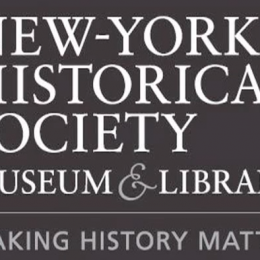 Verbal Description Audio Tour for History Museum
Verbal Description Audio Tour for History Museum
The New-York Historical Society offers a range of services and programs for visitors with disabilities, including Verbal Description tours of many exhibitions. This is one example from the exhibition Lincoln and New York, written in consultation with Art Beyond Sight.
 Verbal Description for Historic Site (Grand Central)
Verbal Description for Historic Site (Grand Central)
Grand Central Terminal offers an audio tour for a general audience and a verbal description version of the tour for people who are blind or partially sighted. The verbal description tour is a collaboration of Art Beyond Sight, MTA Metro North Railroad, and Orpheo USA.
 First Person: Hearing Loss and the Successful Museum Experience
First Person: Hearing Loss and the Successful Museum Experience
Joseph Gordon, a New Yorker with hearing loss and an avid museum goer, describes what makes for successful museum experiences.
 First Person: How Captions and T-Loops Help Deafness
First Person: How Captions and T-Loops Help Deafness
Joseph Gordon, a New Yorker with hearing loss and an avid museum goer, describes the features of closed captions, open captions, and t-loops to assist people with hearing aids.
 Art Making: The Value for Students with Vision Loss
Art Making: The Value for Students with Vision Loss
Jennifer Drower, an art therapist, explains and demonstrates the value of art making activities for young people with vision loss.
 First Person: What I Would Like from a Museum
First Person: What I Would Like from a Museum
Sheila Leigland is blind and lives in Great Falls, Montana.
She is a member of the Montana Association for the Blind.
 First Person: A Blind Museum Docent’s Story
First Person: A Blind Museum Docent’s Story
Judy Schmeidler, who has vision loss because of retinitis pigmentosa, describes what makes a successful museum experience and her work as a docent at the Jewish Museum in New York City.
 Intrepid Air, Sea, and Space Museum
Intrepid Air, Sea, and Space Museum
The Intrepid Museum’s Verbal Description and Tactile Guide provides a tour of the Museum for visitors who are blind or partially sighted. The video explains how visitors can use the tactile map and images to access artifacts in the collection, and access audio description and stories from former crew members and staff through the talking tactile pen.
Module 6-Museum Access: Inclusive Practices by Museum Teams
 Advice for Museums on Accessibility – National Federation of the Blind
Advice for Museums on Accessibility – National Federation of the Blind
Dr. Betsy Zaborowski, former Executive Director of the National Federation of the Blind’s Jernigan Institute, offers advice and inspiration for museums in creating accessibility for blind visitors.
Adv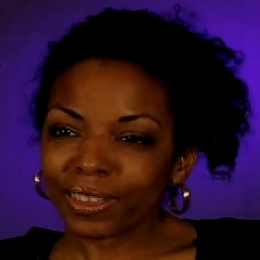 ice on Implementing Access: Cynthia Overton
ice on Implementing Access: Cynthia Overton
Cynthia Overton, Accessibility Advocate and Senior Research Analyst, American Institutes of Research, explains what museums and other cultural institutions should know when implementing accessibility.
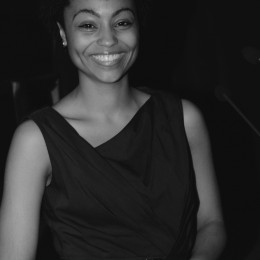 Advice for Museums: Reaching Art Patrons with Disabilities
Advice for Museums: Reaching Art Patrons with Disabilities
Tahra Grant, Sr. Acct. Executive at Rubenstein Communication & Art Beyond Sight Board Member, offers advice to museums. Presented at the Museum of Modern Art, May 2, 2014 at the Project Access New York/Art Beyond Sight symposium.
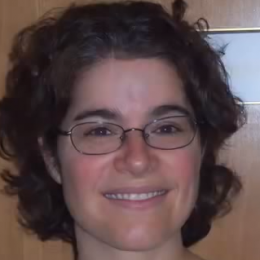 Creating a Museum Accessibility Program
Creating a Museum Accessibility Program
Deborah Cardin, Education Director at the Jewish Museum of Maryland, explains how the museum built a museum team for accessibility.
 The Role of an Advisory Board and Consultants
The Role of an Advisory Board and Consultants
Mariann Smith, Curator of Education at the Albright-Knox Art Gallery in Buffalo, NY talks about how to use an Advisory Board and Consultants in creating a museum accessibility program.
 The Role of Blind Consultants
The Role of Blind Consultants
Helena Vidal, Director of Education and Public Programs at El Museo del Bsrrio in New York City, on the role of blind consultants in creating an accessibility program.
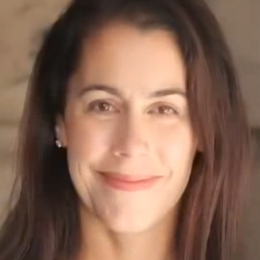 Sighted and Blind Consultants for Accessibility
Sighted and Blind Consultants for Accessibility
Kathryn Potts, former Director of Education at Whitney Museum of American Art, tells how the museum used sighted and blind consultants in creating an accessibility program.
 Building an Accessibility Team
Building an Accessibility Team
Debbi Hegstrom, Associate Educator, Minneapolis Institute of Arts, Minneapolis, MN on how the MIA created a Museum Team for Accessibility.
 Accessibility as a Museum-Wide Initiative
Accessibility as a Museum-Wide Initiative
Mariann Smith, Curator of Education at the Albright-Knox Art Gallery in Buffalo, NY explains how accessibility became an initiative for the entire museum.
 Accessibility: A Director’s Perspective
Accessibility: A Director’s Perspective
Kathy Kelsey Foley, Director of the Woodson Art Museum in Wausau, Wisconsin talks about the need for accessibility to be a museum-wide initiative.
 Staff Training for Disabilities
Staff Training for Disabilities
Ellie McKinney, Assistant Director of Visitor Services at Walker Art Center in Minneapolis, MN on training staff to serve visitors with disabilities.
 Employing Staff in a Wheelchair
Employing Staff in a Wheelchair
Ellis McKinney, Assistant Director of Visitor Services at Walker Art Center in Minneapolis, MN describes the challenges and rewards of having a staff member in a wheelchair.
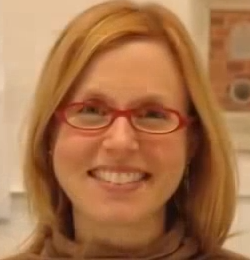 Training Docents for Disabilities
Training Docents for Disabilities
Courtney Gerber, Manager of Tour Program at the Walker Art Center in Minneapolis, Minnesota on how the museum trains docents for disabled visitors.
 Training Teen Docents for Blind Tours
Training Teen Docents for Blind Tours
Whitney Museum of American Art and Art Beyond Sight (formerly Art Education for the Blind) cooperated on a project in which teen interns at the Whitney led blind students from the New York Institute for Special Education on a tour of a Georgia O’Keeffe exhibition.

